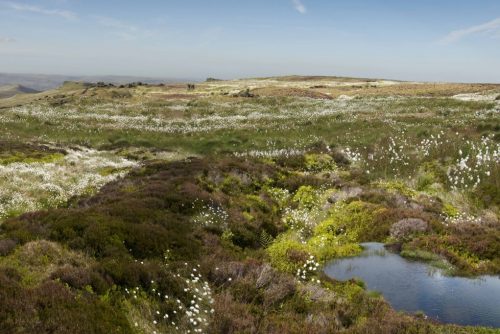Work commences on £2.6m flood protection project

Work has now commenced a £2.6m natural flood management project to protect more than 3,000 homes and businesses in West Yorkshire.
The project, which is being led by the National Trust, will reduce the risk of flooding in Todmorden, Hebden Bridge, Marsden and surrounding areas.
The work at Hardcastle Crags, Wessenden Valley and Gorpley Reservoir will use a combination of natural interventions to slow the flow of water along the Colne and Calder river catchments.
These include the planting of 151 hectares of new woodland at Gorpley Reservoir and in the Wessenden Valley, the restoration of 85 hectares of peat bogs, heath and Molinia (moor grass) and the construction of over 650 “leaky dams”.
Over 3,000 metres of fascines (bundles of brushwood) will also be dug in to help stabilise stream banks and slopes, and new areas of land will be fenced for sustainable grazing by sheep and cattle.
Te project is being supported with £1.3m Growth Deal funding from the Leeds City Region Enterprise Partnership (LEP) and a further £1.3m either in funds or in-kind support from other partners including The Forestry Commission, Moors For The Future Partnership, Environment Agency, Woodland Trust, Yorkshire Water, Calderdale Council and other community groups.
All partners have been working together as part of the White Rose Forest Partnership. New woodlands planted will help grow the White Rose Forest, part of the new Northern Forest.
Craig Best, countryside manager for the National Trust in West Yorkshire, said: “Traditional flood alleviation schemes have focused primarily on delivering hard infrastructures such as flood defence walls to protect the places where people live.
“However, there is increasing recognition of the role natural flood management can play to reduce the impacts of flooding on communities, while delivering key benefits for the natural environment.
“Although natural techniques are not considered to be the single solution to reducing flood risk they are increasingly recognised as playing a significant role alongside more traditional approaches.
“The combination of work we’re planning here of both new habitat creation and landscape restoration will, once things have become established, help absorb significant amounts of water to help slow the flow of water heading downstream towards towns and villages when we experience heavy rain.”
The project is the second largest undertaken by the conservation charity following on from a project on the Holnicote Estate in Somerset where similar interventions have eased flood risk downstream at the villages of Allerford, West Lynch and Bossington.
The project also marks the start of a joint partnership, between the National Trust and Yorkshire Water.
Richard Flint, Yorkshire Water chief executive, said: “The Calder Valley reacts extremely quickly to heavy rainfall and the resulting flooding can have a devastating impact on local people. In 2017 we launched a natural flood management pilot project at Gorpley.
“This, along with the planting of up to 200,000 trees as part of our commitment to plant one million trees over the next 10 years, will help to slow the flow of water, reducing the risk of flooding and make the area more resilient to climate change. However, we know that we can achieve so much more by working together with our partners and that’s why today’s announcement is such good news.
“By working together, we can join up our different projects and deliver landscape scale solutions that provide real benefit for people and the environment. This project also marks the start of an ambitious new partnership between Yorkshire Water and the National Trust and we’re looking forward to delivering more in partnership in the coming months and years.”
Roger Marsh, OBE, chair of the Leeds City Region Enterprise Partnership (LEP), added: “The 2015 Boxing Day floods showed the devastating impact that flooding can have on our economy and people’s lives. I’m delighted that Growth Deal funding is being put into local flood alleviation schemes to improve the standard of protection for communities and businesses.”








